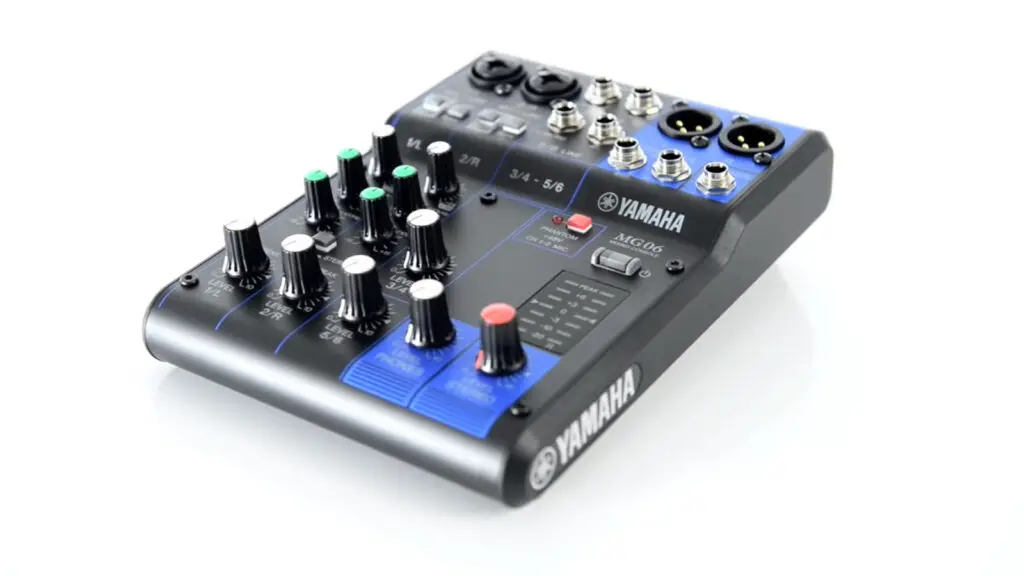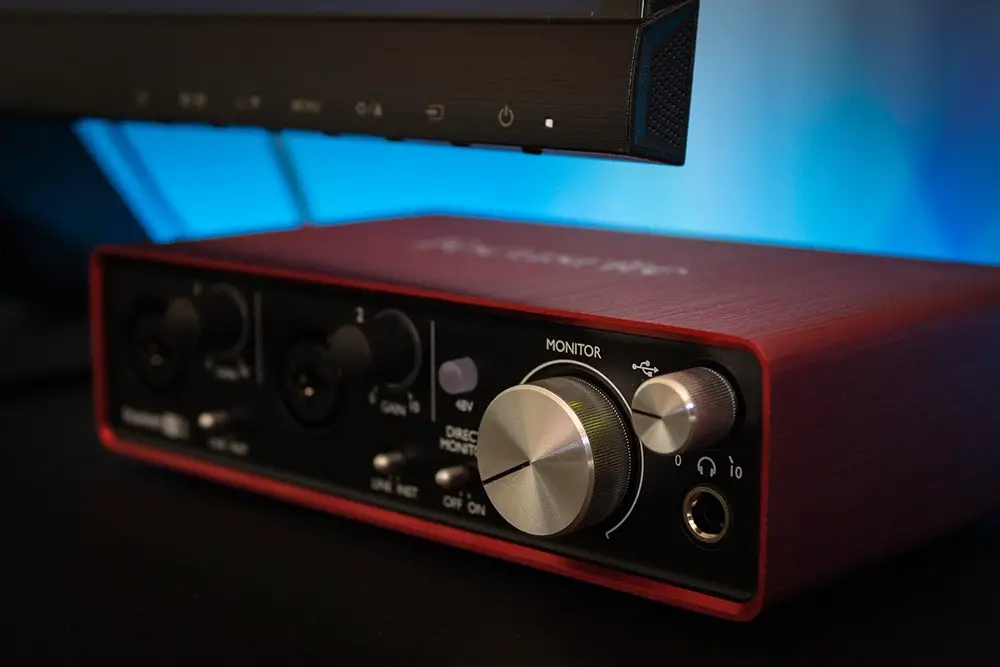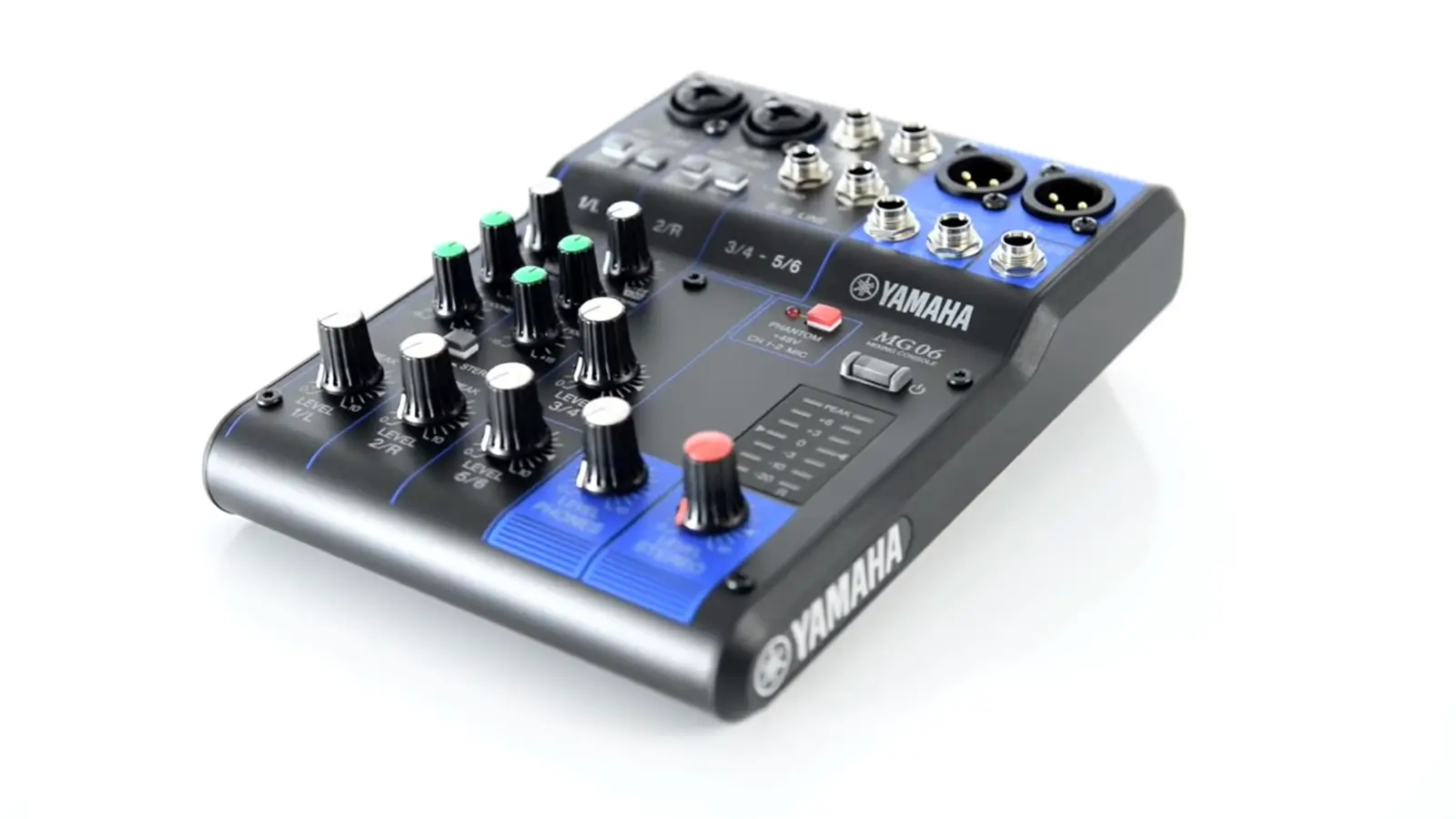Live streaming has taken the world by storm, becoming an increasingly popular medium for gamers, musicians, educators, and many others. Yet, delivering a high-quality stream involves more than just a good camera and a stable internet connection. One often overlooked aspect is the audio.
The difference between amateur and professional-sounding audio can greatly impact the viewer experience and in many cases, determine the success of your stream.
If you’re looking to boost the quality of your live streams, it’s time to understand the role of audio mixers and interfaces as they apply to the world of live streaming.
Do I need an audio mixer for live streaming?
A mixer can be beneficial if you’re using multiple audio sources or seeking enhanced control over audio quality. For simple setups with a single audio source, many streaming applications’ built-in audio controls may suffice.
This article will discuss what these devices do, why you might need them, and how to use them effectively. Whether you’re just starting out or looking to upgrade your current setup, this guide will help you navigate the complex yet rewarding realm of audio technology.

Do You Need An Audio Mixer For Streaming?
Whether or not you need an audio mixer for streaming really depends on the complexity of your audio setup and your personal needs as a streamer. Here are a few things to consider:
- Number of Audio Sources: If you’re streaming with multiple audio sources (like multiple microphones, game audio, music, etc.), an audio mixer can help you balance and control those sources.
- Audio Quality: A mixer can also enhance the quality of your audio. It allows for precise control over audio levels and frequencies, which can make your stream sound more professional.
- Live Audio Adjustments: If you need to make live adjustments to your audio (like changing the volume of your microphone mid-stream), a mixer can be a great tool.
- Space and Budget: Audio mixers can take up some space, and they can also be a significant investment. If you’re just starting out or you’re streaming as a hobby, you might not need to invest in a mixer right away.
- Learning Curve: Audio mixers can be complex, and learning how to use one effectively can take some time. You’ll need to be willing to invest that time if you choose to use a mixer.
If you’re a simple streamer who only uses one microphone and doesn’t need to make live adjustments to your audio, you might not need a mixer. Many streaming applications (like OBS or XSplit) also have basic audio mixing capabilities built-in, which might be enough for your needs.
However, if you’re running a more complex stream and you want to have maximum control over your audio, a mixer can be a great tool to add to your setup.
The most important aspect of streaming is the content you’re creating. High-quality audio can enhance that content, but it’s not a requirement for a successful stream. Consider your specific needs and circumstances before deciding whether or not to invest in an audio mixer.
What Does a Mixer Do For Streaming?
An audio mixer, sometimes called a soundboard or mixing console, is a device that takes in audio signals from various sources, processes them, and outputs a combined signal.
For streamers, an audio mixer can offer several key benefits:
- Balancing Multiple Audio Sources: If you’re streaming with multiple audio sources (like several microphones, game audio, background music, etc.), a mixer can balance these sounds to create a cohesive audio experience for your viewers. Each source can be adjusted individually for volume, tone, and more.
- Sound Quality Control: Mixers offer advanced control over audio levels and frequencies, which can enhance the overall quality of your audio. This can lead to a more professional sounding stream.
- Live Audio Adjustments: With a mixer, you can make real-time adjustments to your audio, like changing the volume of your microphone, muting certain sources, or applying effects. This can be very useful in a live streaming context, where you can’t make post-production adjustments.
- Audio Effects: Many mixers come with built-in audio effects that can be applied to your audio sources. These can include things like reverb, echo, pitch change, and more. This can be particularly useful for streamers who want to add a creative touch to their audio.
- Microphone Preamps: Mixers often have built-in preamplifiers for microphones. Preamps boost the weak signals from microphones to a level that is more usable. A good preamp can significantly improve the sound of your microphone.
- Headphone Monitoring: Many mixers allow for direct headphone monitoring. This allows you to listen to the audio exactly as it’s being sent out to your viewers, which can be a useful tool for ensuring your audio is balanced and clear.
While a mixer can improve your streaming audio quality and control, it also adds complexity to your setup and requires learning to use it effectively. It’s an investment not only in terms of cost but also in terms of space and learning time.
How Do You Use a Sound Mixer For Streaming?
Using a sound mixer for streaming involves a few steps. The exact process can vary depending on the specific mixer you’re using and your individual setup, but here is a general guide:
- Connect your Audio Sources: The first step is to connect all your audio sources to your mixer. These could include microphones, instruments, or the audio output from your computer or game console. These are usually connected using XLR or 1/4″ cables, depending on the inputs available on your mixer and the outputs on your audio source.
- Set your Levels: Once everything is connected, you’ll need to set the levels for each of your audio sources. This involves adjusting the gain and volume knobs for each channel on your mixer until the sound is at a good volume and isn’t distorting. A good practice is to have the person speaking or the source sound play at its loudest anticipated level, and then adjust the gain until the level meter hits around the 0dB mark (which is usually considered the “green” or safe zone on many mixers).
- EQ and Effects: If your mixer has equalization (EQ) controls, you can adjust these to change the tone of your audio. This might involve boosting the bass or treble, for example. Some mixers also have built-in effects like reverb or compression, which you can apply as needed.
- Monitor your Sound: Most mixers have a headphone output that you can use to monitor your sound. This allows you to hear the audio as it sounds after it has been processed by the mixer, which can help you make more precise adjustments.
- Connect to Your Computer: Finally, you’ll need to connect the output of your mixer to your computer so that you can include the audio in your stream. This might involve using an audio interface to convert the analog signal from your mixer to a digital signal that your computer can use. Some mixers have a USB output and can connect directly to your computer.
- Adjust Levels During Your Stream: As you’re streaming, you might need to make adjustments to your audio. You can use the volume knobs on your mixer to adjust the volume of different audio sources, and you can use the EQ controls to adjust the tone as needed.
Every mixer is different, and you’ll need to familiarize yourself with the specific controls and features of your mixer.
It can be helpful to read the user manual or watch tutorial videos online to learn more about your specific mixer. Also, it’s always a good idea to do a test stream or recording before going live to make sure everything is working as expected.

Do I Need an Audio Interface For Live Streaming?
In general, an audio interface is needed for live streaming if you’re using high-quality microphones that require XLR connections or phantom power, or if you need multiple inputs for different audio sources. In simpler setups with a single USB microphone, an audio interface may not be necessary.
Whether you need an audio interface for live streaming depends on your particular setup and requirements. Here are a few scenarios where an audio interface can be beneficial:
- Multiple Microphones or Instruments: If you’re using multiple microphones or instruments and your computer doesn’t have enough inputs to handle them, an audio interface can provide the additional inputs you need.
- High-Quality Microphones: If you’re using a high-quality microphone that requires an XLR connection or phantom power (like many condenser microphones), you’ll need an audio interface to connect it to your computer.
- Sound Quality: An audio interface can often provide better sound quality compared to the built-in sound card in a computer. They often have better analog-to-digital converters and preamps, which can result in cleaner, clearer audio.
- Latency: If you’re doing something where low latency is important, like live music performance, an audio interface can help reduce the delay between when you make a sound and when it’s processed by your computer.
If you’re a beginner streamer using a simple USB microphone and your computer’s built-in audio, you may not need an audio interface. Many modern USB microphones have decent sound quality and can connect directly to your computer without the need for an audio interface.
If you’re running a more complex audio setup or if you’re serious about achieving the best possible audio quality, an audio interface can be a worthwhile investment.
An audio interface is just one piece of the puzzle. The quality of your microphone, your acoustic environment, and your audio processing (like EQ and compression) will also significantly impact the sound of your stream.
Conclusion
Achieving high-quality audio for your live streams is a task that requires careful consideration and the right tools.
Depending on your setup and needs, audio mixers and interfaces can play a significant role in enhancing your audio quality, giving you control over multiple audio sources, and delivering a professional streaming experience to your viewers.
These devices do come with a learning curve and an investment in time and money, so it’s necessary to assess your streaming needs carefully before deciding to incorporate them into your setup.
Ultimately, the key to a successful live stream is not just the technology but the content you create.
With a focus on high-quality audio, you can ensure that your content is heard clearly and enjoyed to its fullest potential by your audience. As you continue to grow and evolve in your streaming journey, always keep exploring new ways to improve and make the most of the technology at your disposal.


